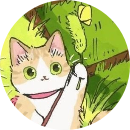Read the following passage and mark the letter A, B, C, or D on your answer sheet to indicate the correct answer to each of the questions from 35 to 42.
Rachel Carson was born in 1907 in Springsdale, Pennsylvania. She studied biology in college and zoology at Johns Hopkins University, where she received her master’s degree in 1933. In 1936, she was hired by the US Fish and Wildlife Service, where she worked most of her life.
Carson’s first book, Under the Sea Wind, was published in 1941. It received excellent reviews, but sales were poor until it was reissued in 1952. In that year, she published The Sea Around Us, which provided a fascinating look beneath the ocean’s surface, emphasizing human history as well as geology and marine biology. Her imagery and language had a poetic quality. Carson consulted no less than 1,000 printed sources. She had voluminous correspondence and frequent discussions with experts in the field. However, she always realized the limitations of her non-technical readers.
In 1962, Carson published Silence Spring, a book that sparked considerable controversy. It proved how much harm was done by the uncontrolled, reckless use of insecticides. She detailed how they poison the food supply of animals, kill birds, and contaminate human food. At that time, spokesmen for the chemical industry mounted personal attacks against Carson and issued propaganda to indicate that her findings were flawed. However, her work was vindicated by a 1963 report of the President’s Science Advisory Committee.
It can be inferred from the passage that in 1952, Carson’s book Under the Sea Wind
A. was outdated
B. became more popular than her other books
C. was praised by critics
D. sold many copies










